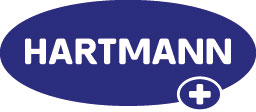PURPOSE T – a new generation Pressure Ulcer Risk Assessment Instrument
We have lots of resources, free for everyone to browse and read and share. These resources are suitable for a range of skin and wound care disciplines, roles, and educational purposes.
As part of the NWCSP Evidence for Wound Care Series – this is a recording of a webinar held on the 27 September with a live Q&A which took place during STOP the Pressure week 2022.
Associate Professor Susanne Coleman – NIHR Post-Doc Researcher, Leeds Institute of Clinical Trials Research, University of Leeds.
Below are the questions which were answered
- Can I ask why if big movements and frequent why still yellow not blue?
- What about involuntary movements? Are staff able to include this risk factor?
- If you notice at the screening stage that they have a PU, is there any need to do stage 2, or just jump to the 3rd stage and say at risk with a PU
- For perfusion would you tick for both treated HF and ADHF?
- How often is the screening section and full assessment recommended to be completed? Currently we complete the Waterlow daily. Is the full assessment done daily?
- I can see this is on EMIS. Has it been set up on Rio/Servelac in any community trusts? Is it on Mobile Rio?
- I already use PURPOSE T. When selecting at risk or a patient having a pressure ulcer, what are the primary prevention and secondary prevention pathways?
- I love that this tool considers vulnerable skin and a history of PU, is PURPOSE-T unique in this way? + (It’s probably like asking which is your favourite child,’) but what element of PURPOSE-T do you think will most impact patientcare and PU prevention?
- Is there anywhere on the assessment to inform that the patient has declined a particular area check eg sacrum ?
- I wish to give excellent feedback for using the Purpose T Paediactrics in our community caseloads. It has really improved engagement from staff as the previous scoring systems were complicated and distracted from implementing care plans / not as applicable to community nursing for children. We have had to add Tone to our assessments as so many of our children appear to be at increased risk with dystonia and or spasms, is this something that you have seen reflected nationally?
- Can the tool be adapted to align with your local terminology and practice i.e. in Scotland we use grades notcategories and ungradable not unstageable
- When should the screening start in acute, within a certain amount of time after admission to ward or time ED?
- Do you think clinicians will embrace the fact that they are being encouraged to use their clinical judgement to screen/in or out at the early stage? In your previous experience did this happen early or later in the process after implementation?














